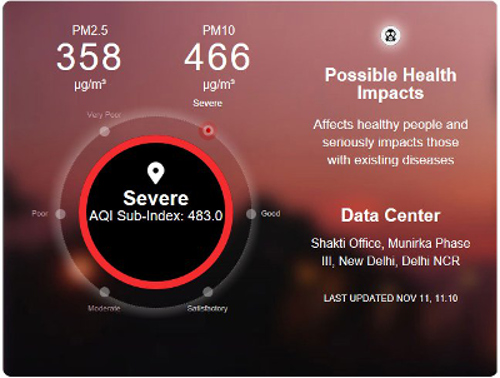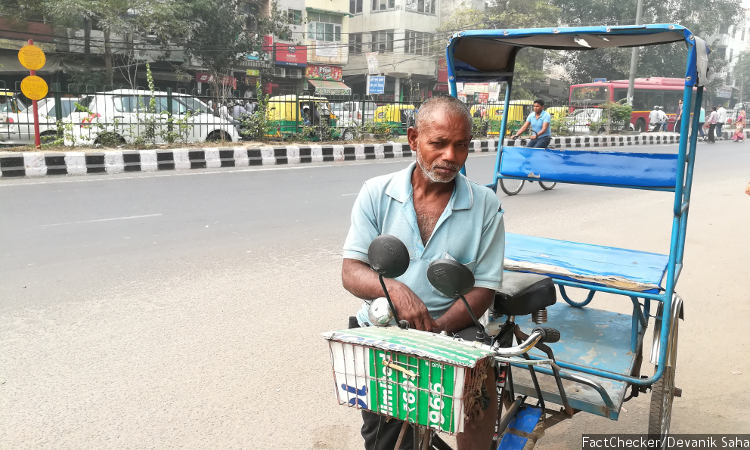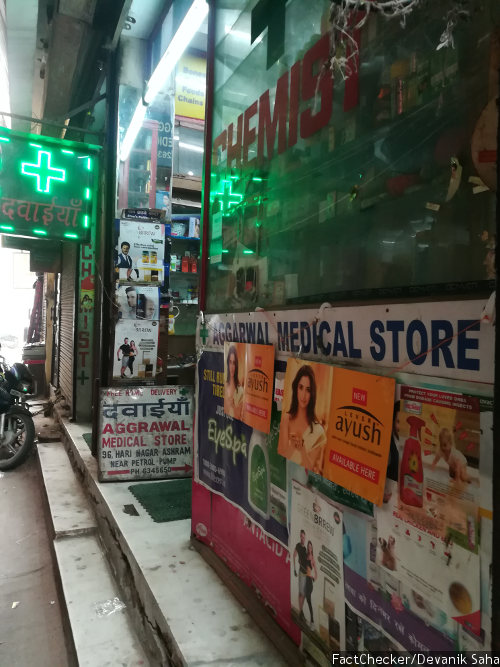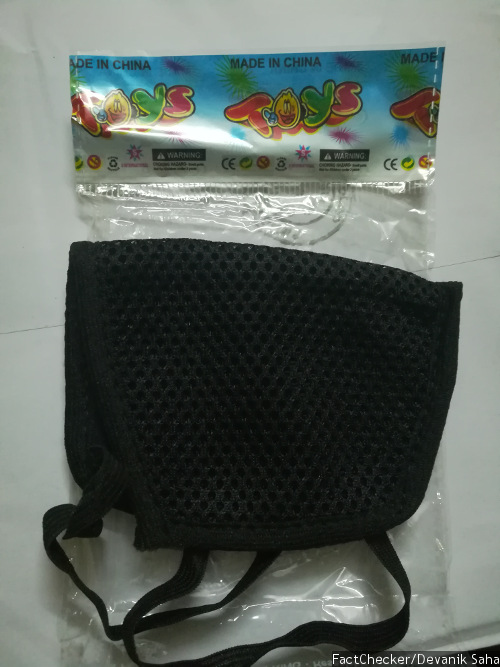Health Ministry Advises Delhiites To Stay Indoors, But For Many That’s Not An Option

The Ashram chowk, one of the busiest traffic intersections in Delhi. The health ministry issued an advisory on November 8, 2017, asking people in the national capital to stay indoors, in response to rising pollution levels. But staying indoors isn’t an option for those who have to work outdoors for their livelihoods.
On November 8, 2017, the ministry of health and family welfare issued an advisory asking people to stay indoors and avoid areas of smoke and dust in response to the rising pollution levels in Delhi, where a health emergency has been declared.
Though the advisory is well-intentioned, a FactChecker investigation revealed that staying indoors isn’t an option for those who have to work outdoors for their livelihoods. For instance, two of four people FactChecker spoke to had no awareness of the severe pollution levels.
We spoke to different people near Ashram Chowk, one of the busiest traffic intersections in Delhi. In Delhi, as much as 39,806 kg of fuel (diesel, petrol and CNG vehicles combined) is wasted due to idling--time wasted due to traffic delays--of which Ashram intersection accounts for 11,038 kg (28%), India Today reported on December 29, 2014.
Umesh (he uses only one name), a 22-year-old volunteer at the traffic intersection, was wearing a basic surgical mask generally used in hospitals.

Umesh, the traffic volunteer, managing the traffic at Ashram intersection.
“I don’t know why this mask has been given, but I am aware that there is pollution in Delhi,” Umesh told FactChecker. “This mask was given to me a few days ago by the contractor who has hired me.”
Umesh said that he has been working at the traffic junction for a month.
Air-quality levels in Delhi crossed “poor” eight times since October 8, 2017, “very poor to severe” 21 times and “emergency” once as they have for 48 hours to November 8, 2017, according to data from the government’s own alert system, IndiaSpend reported on November 9, 2017. This means that Umesh has been exposed to very poor and severe quality of air over the last month without being aware of it.
During the conversation, the air quality index (AQI) reading at Ashram was 483 μg/m3--19 times the safe limit of World Health Organization (WHO). The average PM 2.5 recorded over the preceding hour was 358 μg/m3 while PM10 was 466 μg/m3, according to data from IndiaSpend #Breathe network of sensors.

Source: IndiaSpend Breathe Monitor
PM 2.5 refers to minute particles, smaller than 2.5 microns—invisible and capable of reaching the farthest reaches of the lungs—made up of a toxic cocktail of up to 23 elements, including acids, metals, chemicals, soil and soot. While PM10 refers to those particles which are between 2.5 and 10 microns in diameter.
People with heart or lung diseases, older adults and children are most likely to be affected by particle pollution exposure. However, even if you are healthy, exposure to high levels of particle pollution can cause irritation of the eyes, nose and throat, coughing, chest tightness and shortness of breath, heart attacks and premature death in people with heart or lung disease.
Based on national AQI readings generated by Central Pollution Control Board air-quality monitors, the GRAP system categorises pollution levels as “good” (AQI reading of 0-50), “satisfactory” (50-100), “moderate” (100-200), “poor” (200-300), “very poor” (300-400), and “severe” (400-500), IndiaSpend reported on November 9, 2017.
At the Ashram bus stand, Patel Paswan, a 60-year old rickshaw puller, knew little about air pollution.

Patel Paswan, a 60-year old rickshaw puller, wasn’t aware of air pollution and smog.
“In the past few days, my eyes have been burning and I have been facing a lot of cough,” Paswan told FactChecker. “I am not so sure about what the smog is about, but I just know that my eyes were burning.”
As many as a fourth of deaths due to respiratory diseases occur in India, according to the latest Global Burden of Disease data, Indian Express reported on August 18, 2017.
“I have no money to get treatment,” Paswan said. Hospitals in Delhi have registered a 20% rise in respiratory distress cases, The Hindu reported on November 10, 2017.
Ravish Kumar, a 19-year old autorickshaw driver from Uttar Pradesh, had no knowledge of air pollution. “I have seen people with masks, but I am not aware of why they are wearing it,” Kumar told FactChecker.
“In Punjab and Haryana, farmers are burning their waste crops, which is why the pollution increased in Delhi,” said Manoj Kumar, 35-year-old autorickshaw driver. “That is what I have heard”.
Delhi’s air quality could improve 90% if stubble burning in fields is stopped, according to a 2016 apportionment study by the Indian Institute of Technology, Kanpur, IndiaSpend reported on October 17, 2017.
“Will the government put roti on our plates?,” Kumar said when told about the health ministry’s advisory. “Should we send our children to the government? Will they take care of them? We have to earn our livelihood and get passengers. We have no option.”

Autorickshaws at Delhi’s Ashram intersection.
Kumar said masks aren’t available in Ashram or most pharmacies in Delhi. FactChecker visited two pharmacies nearby, and both were selling cheap masks.
Aggarwal Medical Store, just 10 meters away from the autorickshaw stand, was selling masks for Rs 30 and Rs 110. Another medical shop was also selling masks.

Aggarwal Medical Store at Delhi’s Ashram intersection was selling masks worth Rs 30 and Rs 110.
The second shop was selling black coloured synthetic masks--made in China--for Rs 30 though its effectiveness appeared unlikely.
“We sell only these masks,” the owner, who refused to be photographed and named, told FactChecker.
“I know there are others available, such as N55 and N99, which cost more, but we only sell these ones.”
He added that on the day the smog started around November 7, they sold more than 500 masks. “But now things are getting clear, so sales have dipped.”

A made-in-China mask being sold for Rs 30 at a pharmacy in Ashram market.
Even expensive masks may not be of much help. “N95 masks and air purifiers, whose sale has increased in the last few days due to pollution, may not provide full-time protection, and are not completely effective, " Randeep Guleria, a leading pulmonologist and director of the All India Institute of Medical Sciences, New Delhi, told Times Now on November 9, 2017.
(Saha is an MA Gender and Development graduate from the Institute of Development Studies, University of Sussex.)


